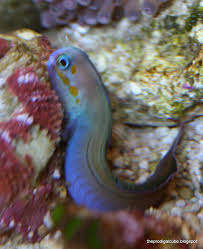The Presence of Dragons in Ancient Chinese Paintings: A Symbol of Power, Wisdom, and Prosperity

The dragon is undoubtedly one of the most powerful and revered symbols in Chinese culture. In Chinese art, dragons represent a wide array of values, including strength, wisdom, prosperity, and divine protection. These mythical creatures have been an essential part of Chinese civilization for thousands of years, appearing frequently in Chinese paintings that convey not just aesthetic beauty but deep spiritual and cultural meanings.
In ancient Chinese paintings, dragons are often depicted in elaborate scenes, symbolizing the emperor’s divine authority, the forces of nature, and the harmony between humans and the universe. This article delves into the history, symbolism, and representation of dragons in Chinese paintings, examining their role in shaping Chinese art and culture throughout different dynasties. By analyzing the visual techniques used to portray these dragons, we can gain deeper insight into their significance within Chinese society.
1. The Symbolism of the Dragon in Ancient Chinese Culture
In Chinese culture, the dragon is far more than a mere mythical creature. It is an ancient symbol of imperial power and the ultimate protector of the state. Traditionally, the dragon is associated with the emperor, who was considered to be the earthly embodiment of the Dragon, ruling over both heaven and earth. In fact, the emperor’s throne was referred to as the “Dragon Throne,” and the emperor’s robes, especially during the Qing Dynasty, were often embroidered with dragon motifs, symbolizing his imperial status.
The dragon in Chinese culture is also tied to natural forces, especially water, rain, and agriculture. It is often believed that the dragon controls rain, which was essential for the prosperity of the agrarian society in ancient China. Therefore, the presence of a dragon in Chinese paintings often represents not only imperial authority but also blessings of good fortune and harmony between nature and humankind.
Furthermore, dragons are seen as beings with immense wisdom and spiritual power, often depicted as protectors of sacred spaces and revered entities in mythology and folklore. Their ability to navigate the heavens, the earth, and the waters made them symbols of the interconnectedness of all elements, as well as of balance and harmony.
2. Dragons in Chinese Imperial Art: Depictions of Royal Power
The most prominent and frequent appearances of dragons in ancient Chinese paintings can be found in imperial art. Paintings commissioned by the emperor, often produced during the Ming and Qing Dynasties, were created to celebrate the divine authority and celestial connection of the emperor. These works typically depict dragons in majestic and powerful poses, often surrounded by auspicious symbols such as clouds, mountains, phoenixes, and lotus flowers.
Dragons in imperial paintings are often portrayed with five claws, a feature reserved solely for depictions of the emperor, reinforcing the association between the dragon and the highest authority in the empire. The presence of the dragon in such paintings was a way of visually affirming the emperor’s divine right to rule and emphasizing his connection to the cosmic order. These dragons were typically shown in dynamic, swirling forms, rising or flying through clouds or above seas, symbolizing their mastery over the elements.
One of the most famous examples of a dragon-themed painting is the Dragon and Phoenix motif, often used in paintings that represent the harmonious balance between the masculine (dragon) and the feminine (phoenix) forces. This balance was viewed as a reflection of the emperor’s rule and the harmony of the natural world. Such paintings, created on silk or scrolls, often depicted the dragon as a majestic, fluid form that connected heaven and earth.
The dragon’s portrayal in royal art was not limited to paintings on silk or paper. The motif also appeared in imperial robes, ceramics, and decorative arts, reinforcing the presence of the dragon as a divine protector of the emperor’s reign.
3. The Role of Dragons in Religious and Spiritual Paintings
In addition to their representation of imperial power, dragons also held a significant role in religious and spiritual art. The connection between dragons and deities or the divine was central to many Buddhist and Daoist paintings. In these religious traditions, dragons were seen as protectors of the sacred, representing divine intervention and guidance.
In Daoist art, dragons were often depicted in scenes of cosmic balance, where they were said to control the forces of nature, such as water, wind, and fire. In these works, the dragon was shown as a guardian of the cosmos, intervening to restore order when the natural world fell into chaos. Paintings depicting Daoist gods and immortals often featured dragons as their companions or protectors, symbolizing their divine powers.
In Buddhist art, dragons were often depicted as guardians of the Buddha’s teachings and the sacred scriptures. These dragons, like the one depicted in the famous painting of the Dragon King in Longmen Grottoes, were believed to watch over the sacred spaces, bringing protection and spiritual blessings. The role of the dragon as a celestial guardian made it a natural choice in religious artwork, where it was portrayed as both a physical and spiritual protector.
The dragon’s spiritual significance in religious paintings extended to temples and shrines, where they were often featured in large murals or sculptures. These murals depicted dragons alongside gods, sages, and immortals, reinforcing the idea that dragons were not just creatures of power but beings with divine wisdom and insight.
4. The Artistic Representation of Dragons in Traditional Chinese Painting Techniques
The depiction of dragons in ancient Chinese paintings is not just about the symbolism; it is also an intricate reflection of traditional Chinese artistic techniques. Chinese artists employed various methods to create dragons that conveyed their mystical and majestic qualities. The key to their depiction lay in the use of fluid brushwork, bold lines, and vibrant colors to create a sense of movement and power.
Brushstrokes in Chinese art are essential to capturing the ethereal and otherworldly qualities of the dragon. Using soft, flowing strokes, the artist would create the dragon’s long, serpentine body, often spiraling or twisting in mid-air. The brushwork’s fluidity and grace allowed the dragon to appear alive, almost as if it were floating or flying across the painting.
In terms of composition, the dragon’s presence was often set against a backdrop of clouds, water, or mountains, which helped reinforce its connection to the natural elements. The clouds surrounding the dragon symbolized its ability to control the weather and bring rain, an important function in the agricultural society of ancient China. Water often signified the dragon’s dominion over rivers and seas, while mountains represented stability and strength.
5. Dragons in Landscape and Court Paintings
Another fascinating aspect of dragon imagery in Chinese painting is its role in landscape and court paintings. Landscape painting, one of the most important genres of traditional Chinese art, often featured dragons to symbolize the spiritual connection between the emperor and the natural world. In these paintings, the dragon was depicted soaring above mountains or diving into rivers, representing its ability to bridge the gap between the heavens and the earth.
These paintings would often incorporate both natural scenery and human-made elements, such as temples, palaces, and gardens, creating a harmonious fusion of nature and civilization. The dragon’s depiction in these scenes was not merely a decorative element but a symbol of the emperor’s role as the earthly representative of the divine and his responsibility to maintain balance and harmony between the natural world and human society.
Court paintings, commissioned by the emperor or nobility, also featured dragons prominently. These works often depicted royal ceremonies, court life, and the emperor’s interactions with subjects, with the dragon serving as a symbol of his divine protection and power. In some court paintings, the dragon was shown in the background, appearing as a celestial being that looked over the emperor’s rule, reinforcing the idea that the emperor’s reign was protected by higher forces.
6. The Influence of Dragons on Folk Art and Popular Culture
The influence of dragons in Chinese art was not limited to royal and religious paintings. Folk art and popular culture also embraced the dragon motif, albeit in more accessible and decorative forms. In folk art, dragons were often depicted in vibrant colors, dancing across scenes of festivals, celebrations, and daily life.
New Year paintings, for example, often featured dragons alongside other auspicious symbols such as phoenixes, lotuses, and peonies. These paintings were believed to bring good fortune and drive away evil spirits, with the dragon serving as the central figure of protection and power. During the Chinese New Year and Lantern Festival, the dragon was celebrated through dragon dances and lantern displays, which were often accompanied by painting and artwork featuring the dragon in motion.
Chinese paper cuttings and embroidered textiles also featured dragons, especially in the form of wedding gifts or ceremonial decorations. The dragon was seen as a symbol of good luck and prosperity, making it an ideal decoration for significant life events.
7. The Enduring Legacy of Dragons in Chinese Art
The legacy of dragons in ancient Chinese paintings remains significant today. While modern Chinese art has evolved, the dragon continues to be a popular subject in both traditional and contemporary works. Artists still look to the ancient traditions of painting to convey the same meanings and symbols that the dragon represented in the past.
Today, the dragon remains a powerful symbol of China’s rich cultural heritage, and its presence in Chinese paintings continues to reflect the strength, wisdom, and harmony that are integral to the country’s artistic identity.
Conclusion
Dragons in ancient Chinese paintings serve as more than just decorative elements. They are symbolic creatures representing imperial power, spiritual protection, and the interconnectedness of nature. From the grand royal portraits of emperors to the humble folk
art of festivals, the dragon has remained a constant presence in Chinese art, reinforcing the deep cultural, spiritual, and political beliefs that have shaped Chinese society for millennia. Through their intricate brushwork and vibrant colors, these ancient artworks continue to captivate audiences, offering a glimpse into the complex and rich cultural history of one of the world’s oldest civilizations.

